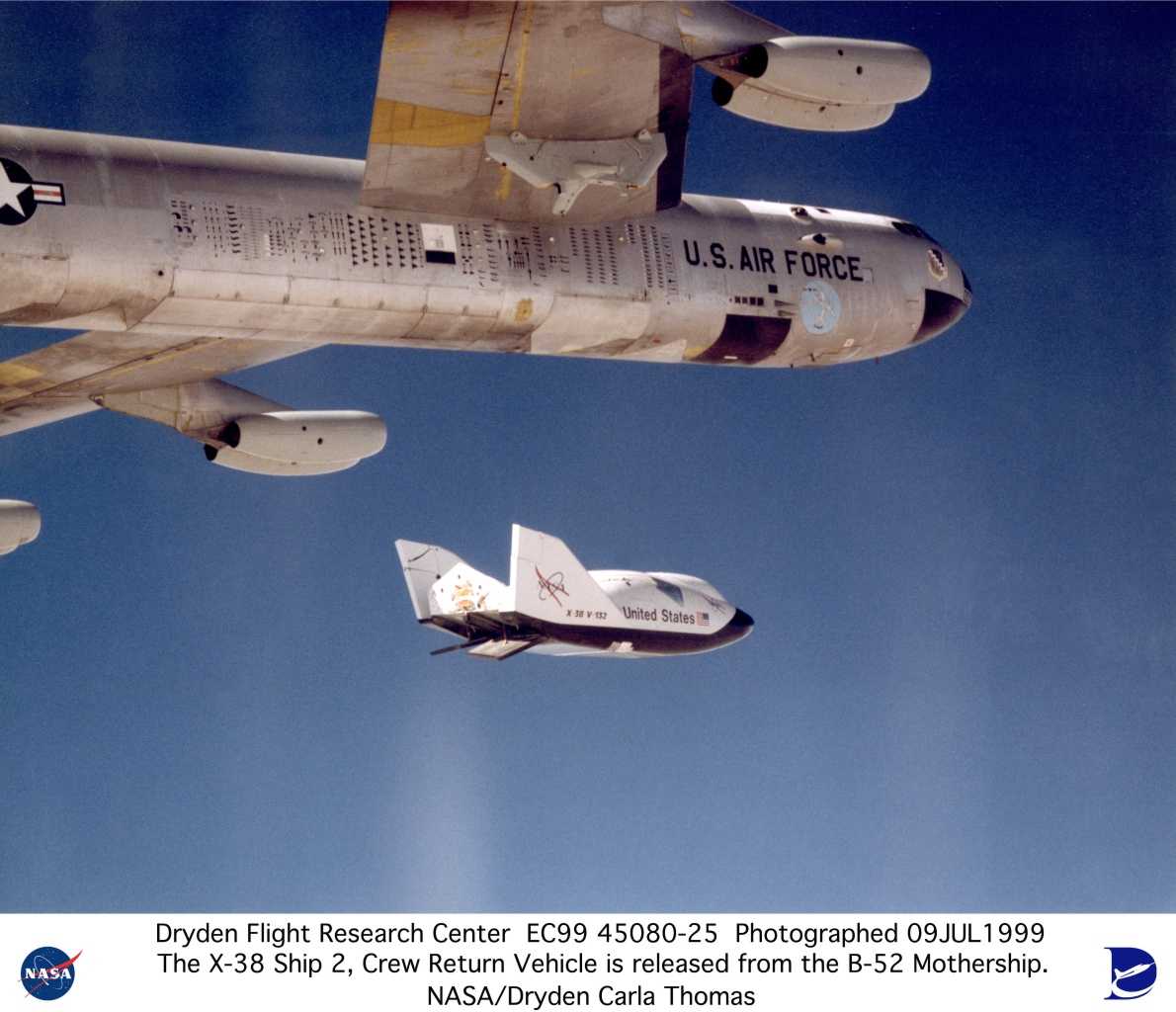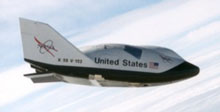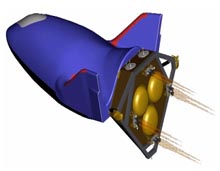|
X-38 SummaryX-38 Details Current
Status
Home
|
During the first years of the International Space Station's life on orbit, a Russian Soyuz capsule will always be present to provide crewmembers with the means to evacuate the station quickly. But work is well under way on development of the new emergency Crew Return Vehicle (CRV) for the International Space Station. The Soyez can only stay on orbit for six months as opposed to three years for the CRV. The vehicle's construction remains economical
because of several factors. The X-38 is scheduled to be launched aboard the Space Shuttle (tentatively Feb 2002), released in the ISS orbit inclination (51.6 deg) and has Baja California as the primary landing site (secondary sites are Argentina and Australia). De-Orbit Propulsion Stage The X-38 Deorbit
Propulsion Stage (DPS) provides The DPS wet mass is 5500 lbm while the wet mass for the CRV DPS is 6100 lbs. Hydrazine comprises 1950 lbm of those amounts. The DPS is approximately 15.5 ft across and 6 feet in length. The DPS is jettisoned from the lifting body after the deorbit burn is completed. |

 The
X-38 uses a lifting body design already proven and tested in experimental
vehicles of the 1970's. Additionally, parts of the X-38 can be bought
over the counter, using existing technology rather than technology invented
from scratch - a marked difference from past NASA spacecraft.
The
X-38 uses a lifting body design already proven and tested in experimental
vehicles of the 1970's. Additionally, parts of the X-38 can be bought
over the counter, using existing technology rather than technology invented
from scratch - a marked difference from past NASA spacecraft.
 deorbiting
capability for the X-38/CRV. The structure is primarily composite with
three mono-propellant hydrazine tanks, eight axial thrusters, and eight
reaction control system (RCS) thrusters. The TDRSS-type propellant tanks
are operated in a blowdown mode while pyrotechnic valves keep the manifold
dry until operational use.
deorbiting
capability for the X-38/CRV. The structure is primarily composite with
three mono-propellant hydrazine tanks, eight axial thrusters, and eight
reaction control system (RCS) thrusters. The TDRSS-type propellant tanks
are operated in a blowdown mode while pyrotechnic valves keep the manifold
dry until operational use.